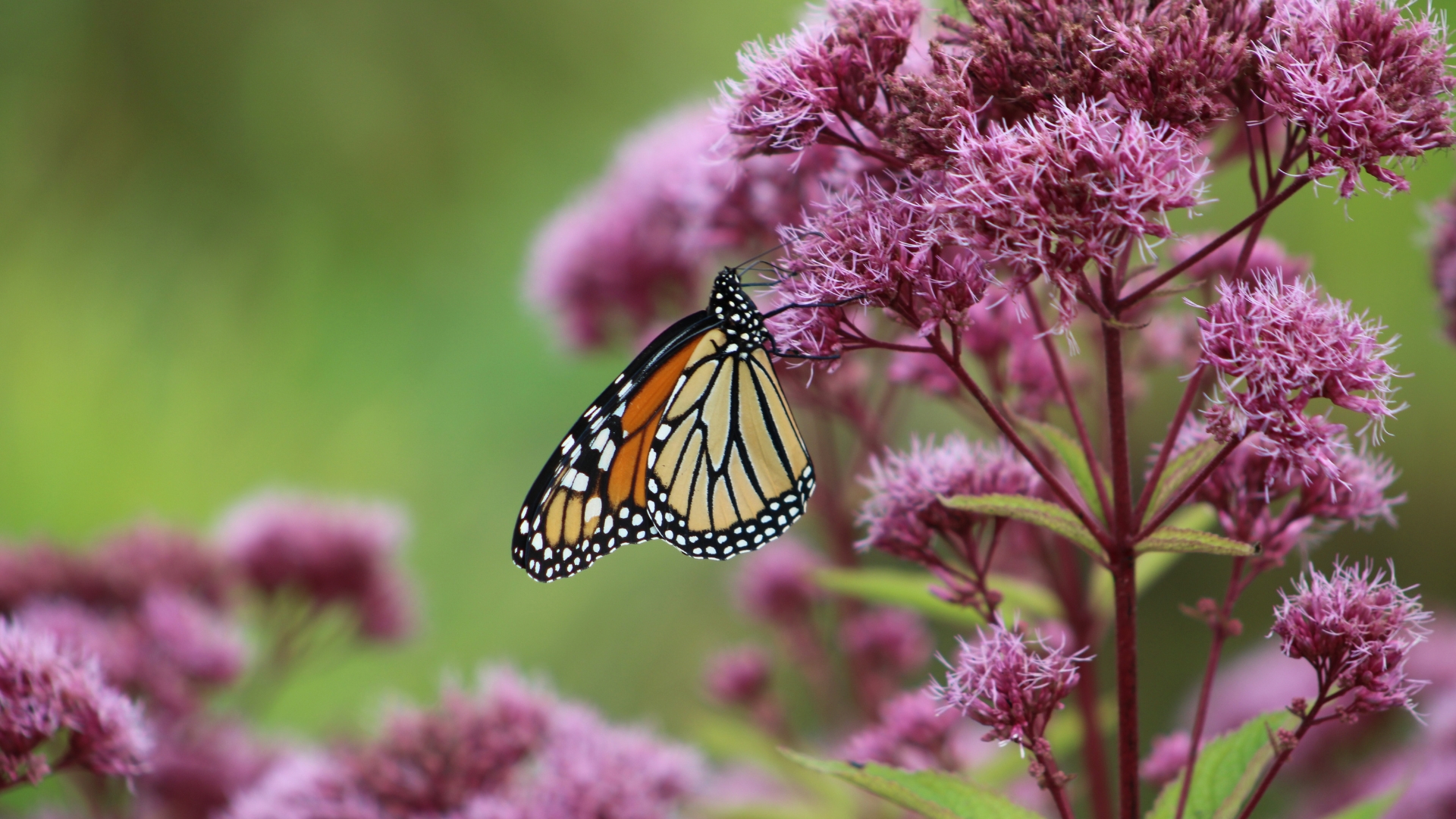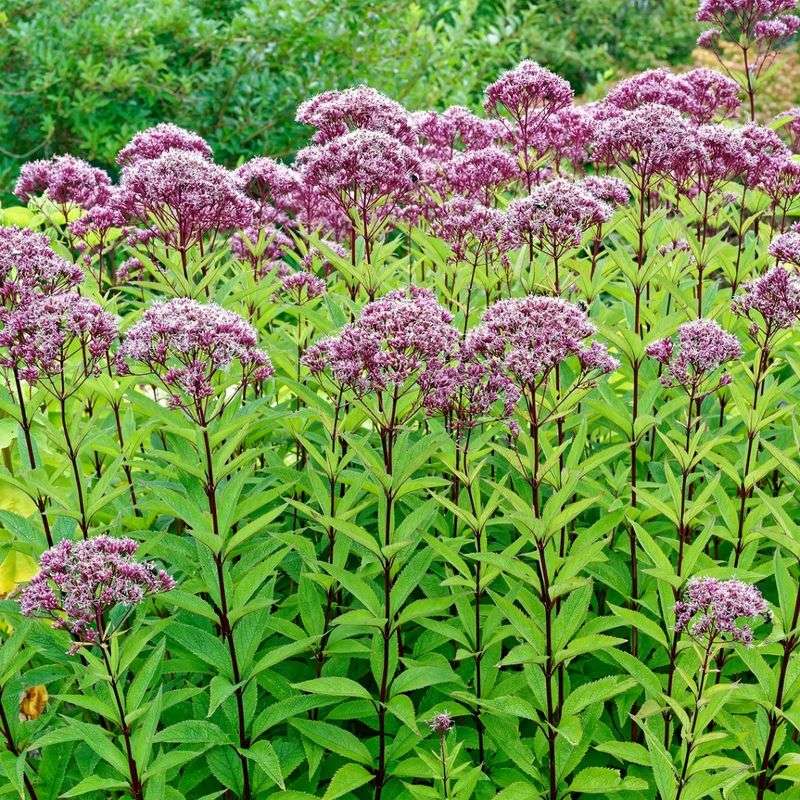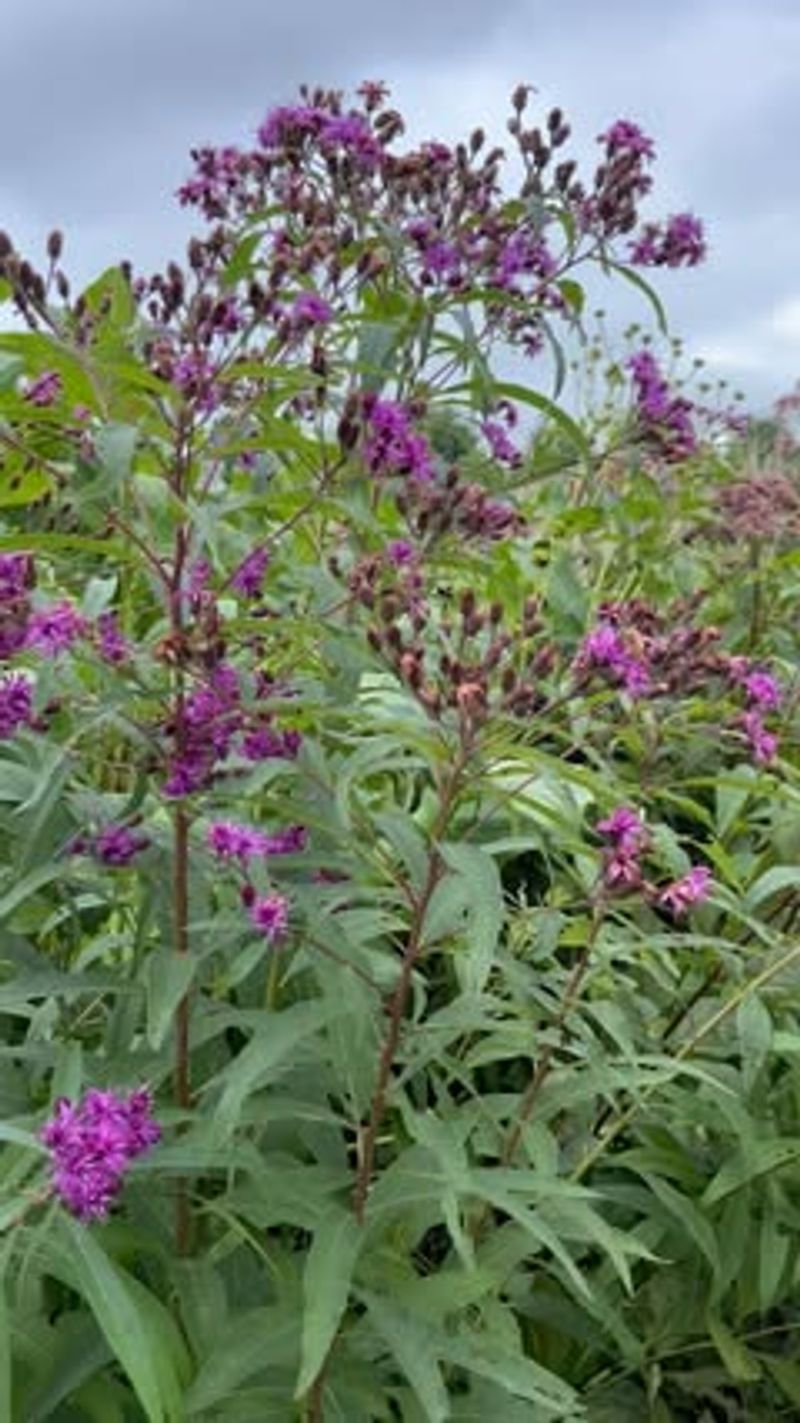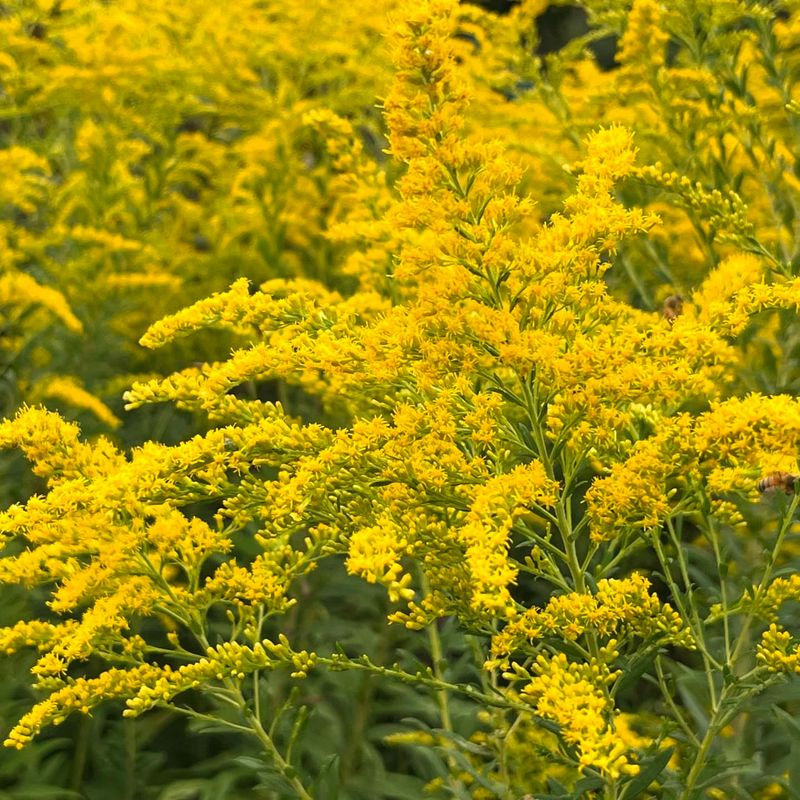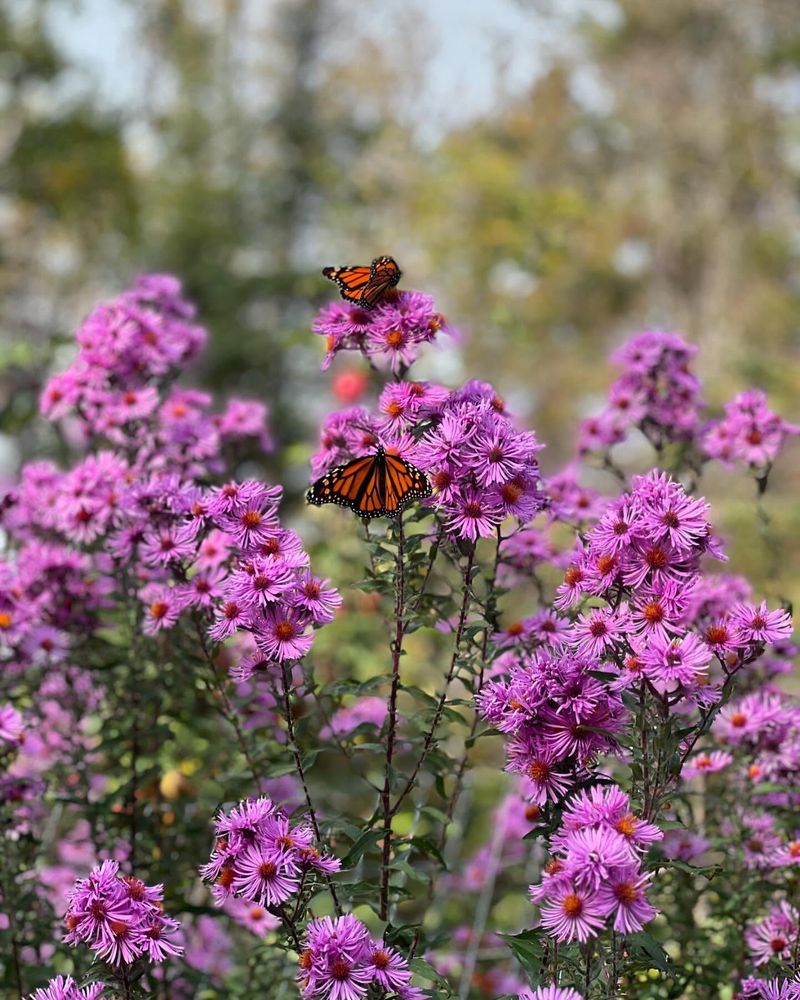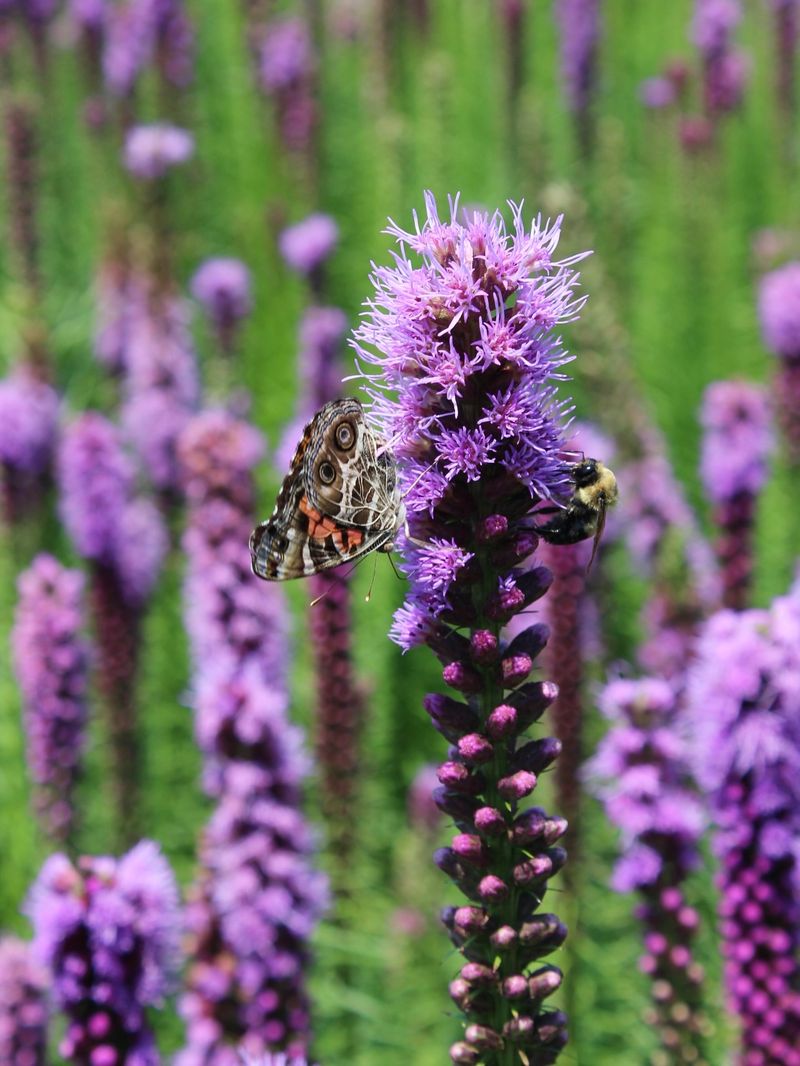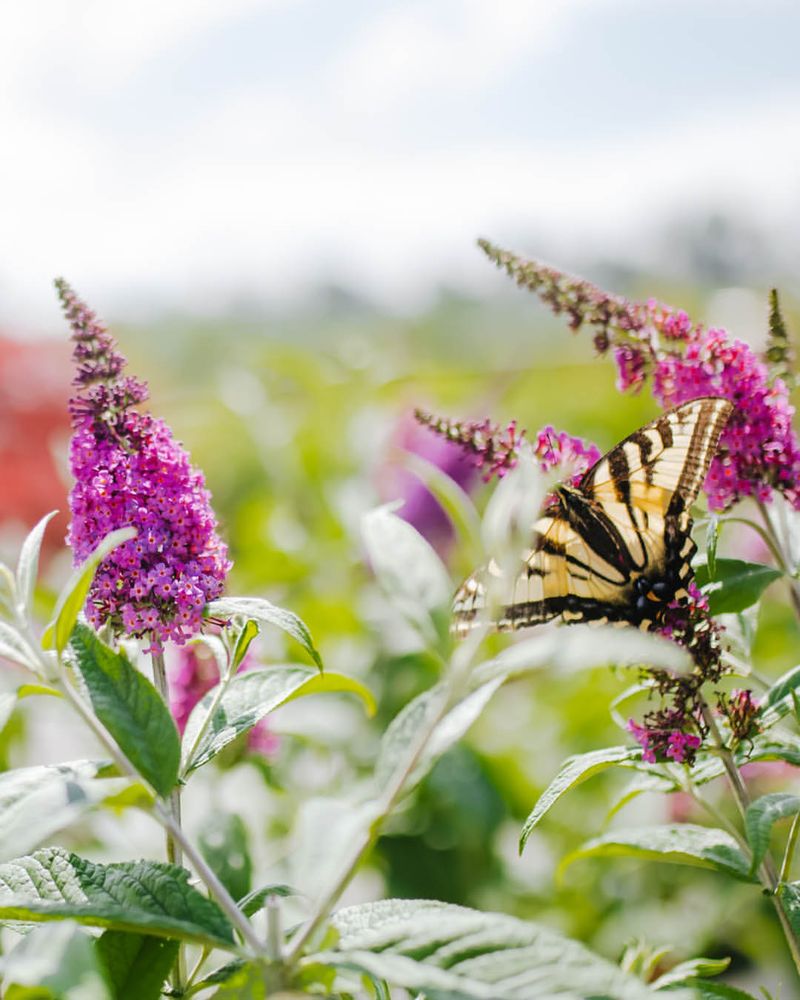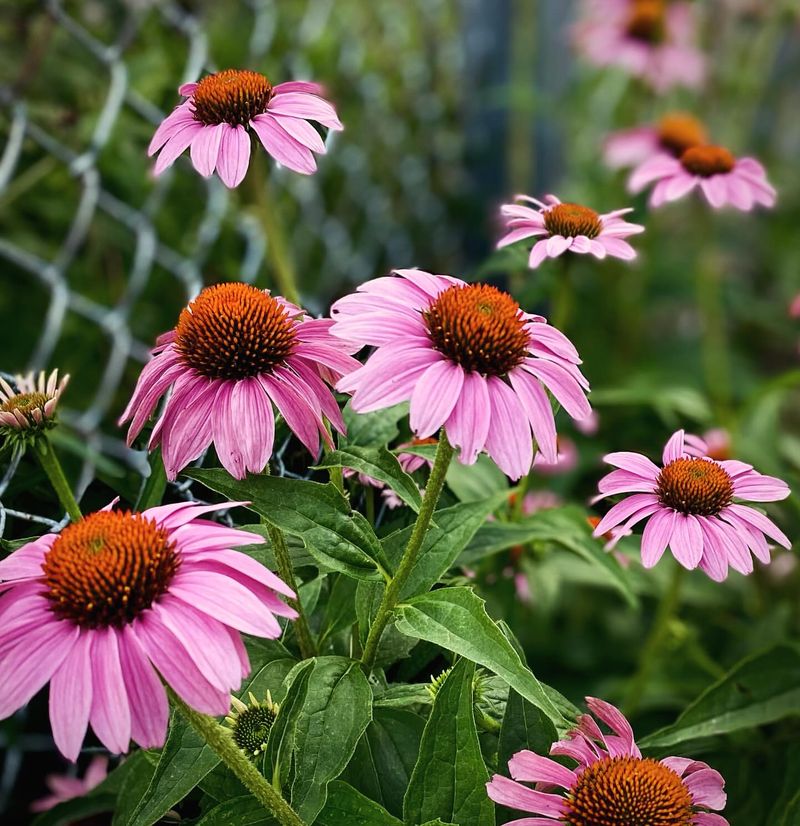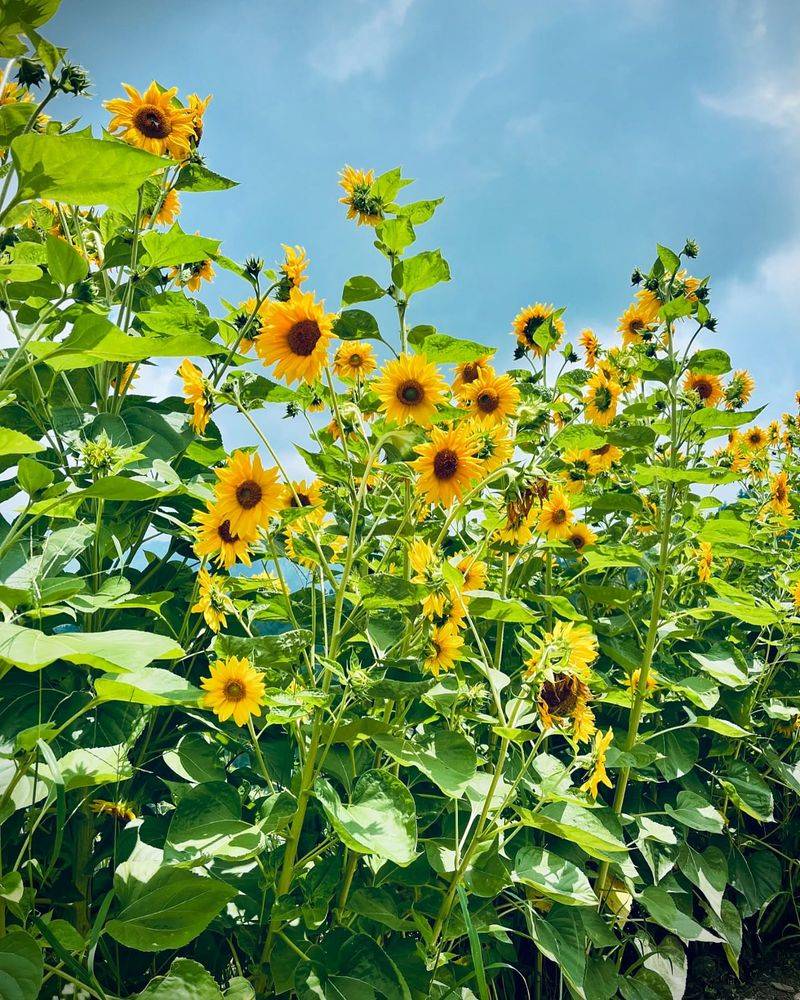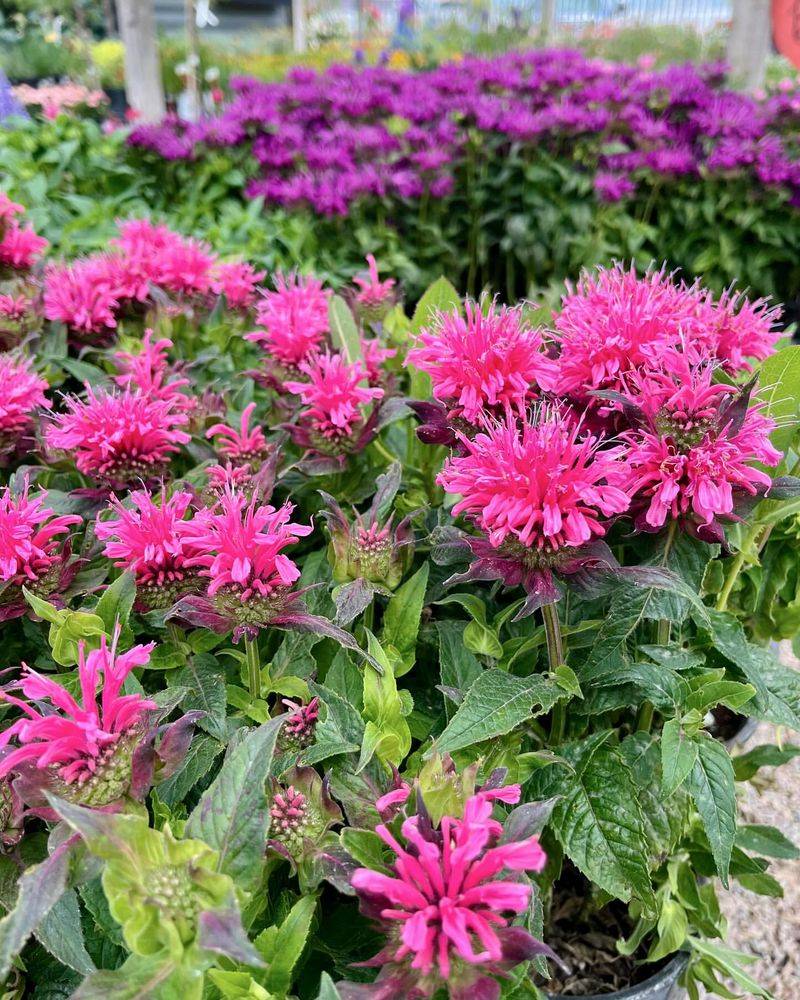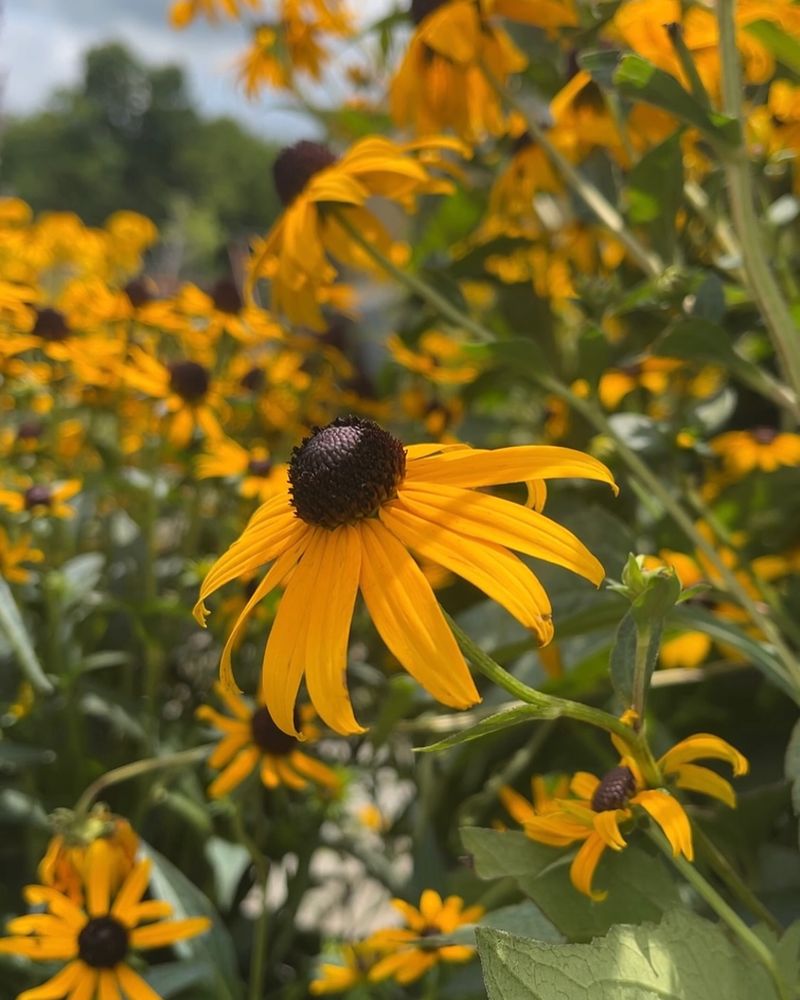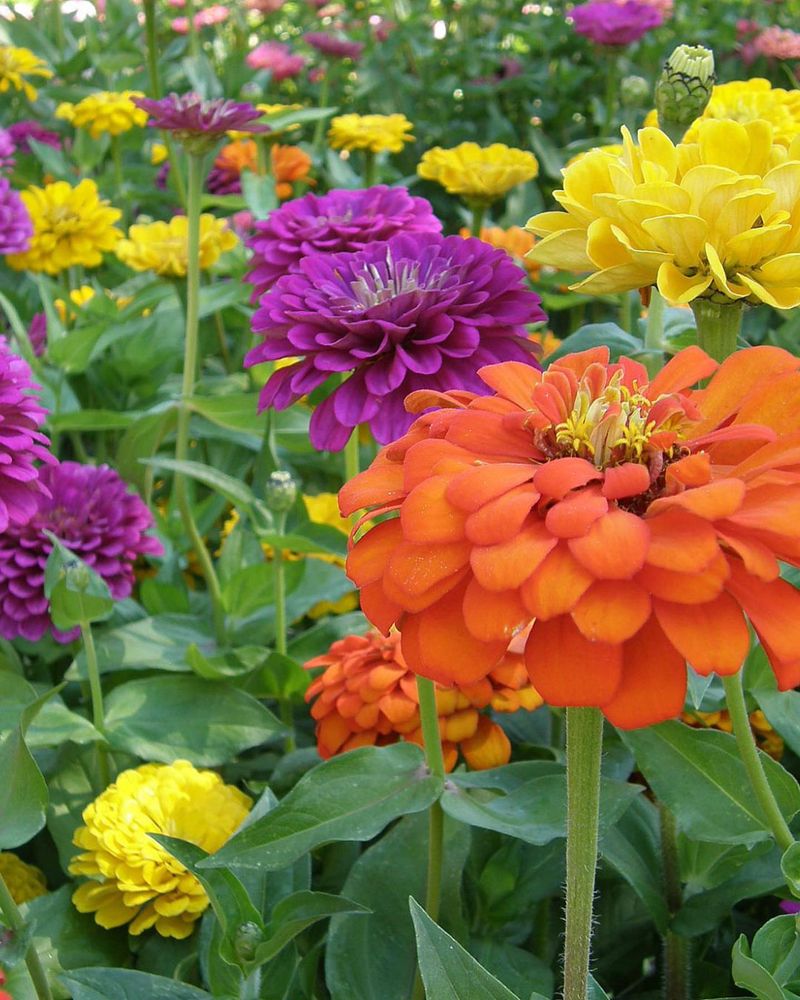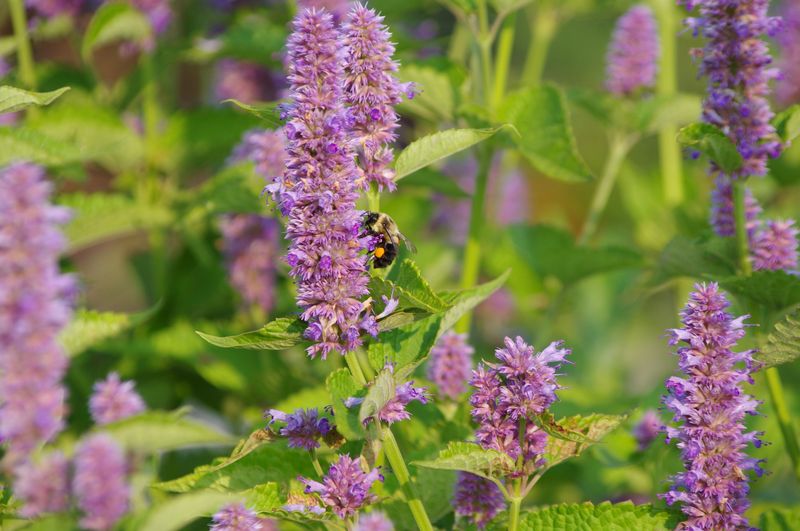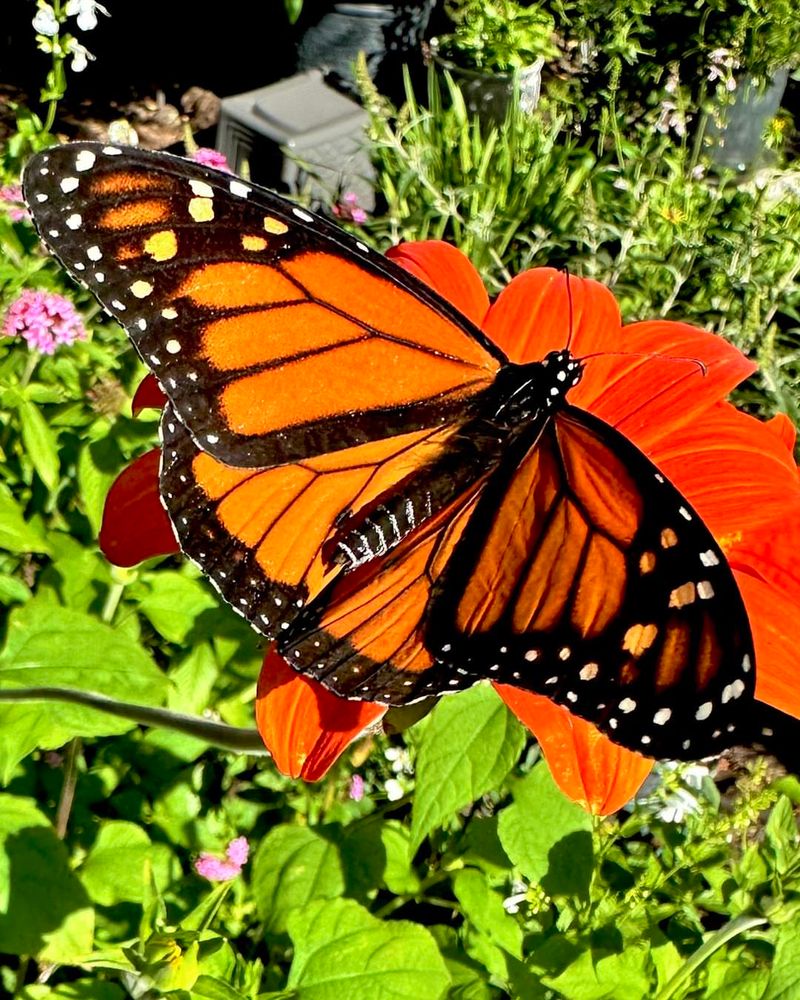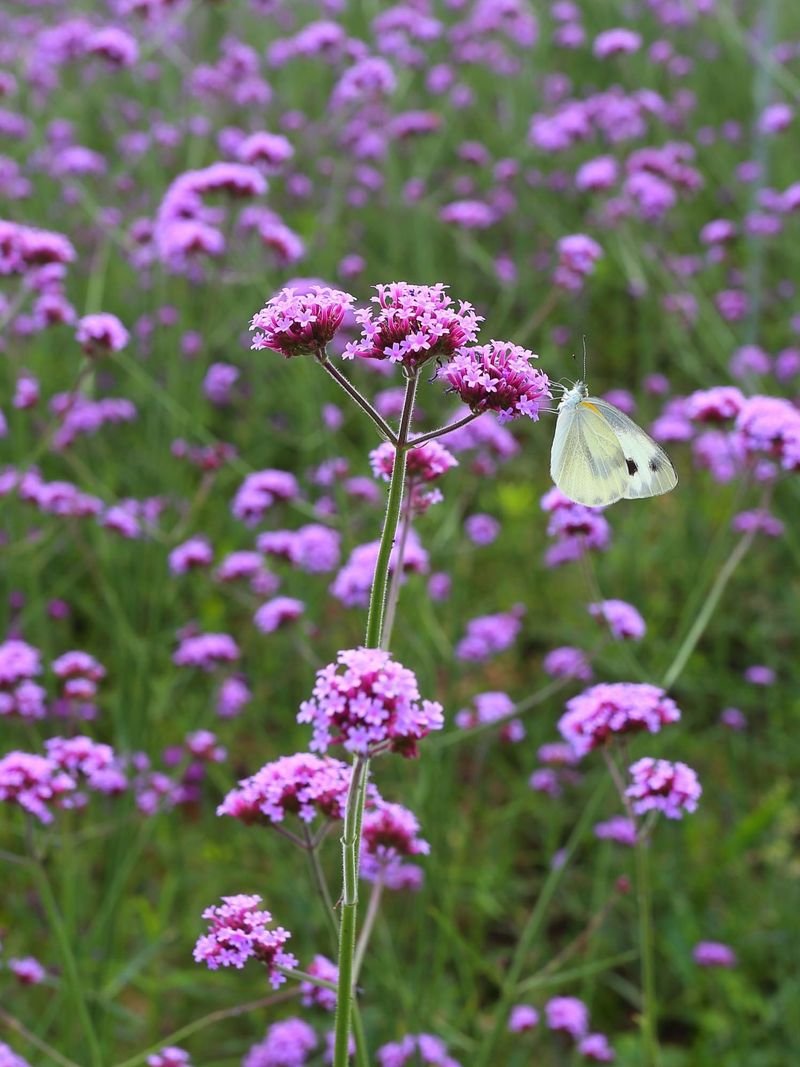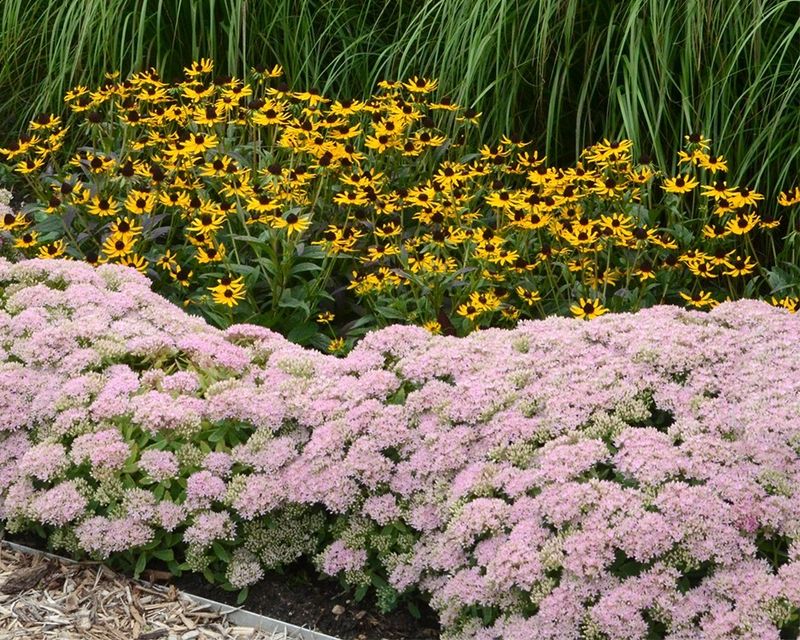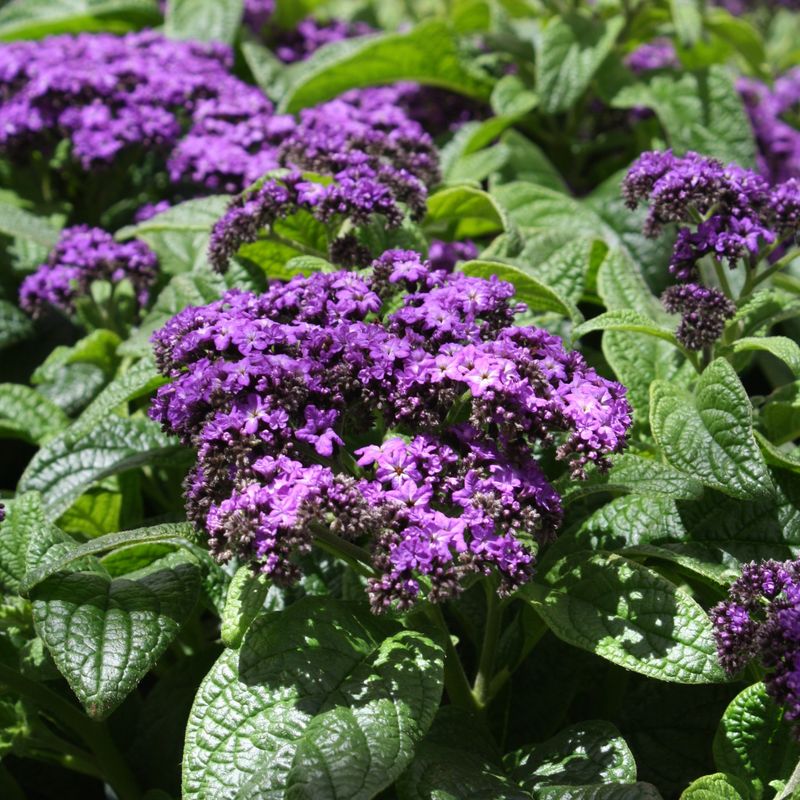August might be winding down, but Vermont gardens are still buzzing with color—and butterflies know exactly where to go. These late bloomers keep the show going just when things start to fade.
I’ve seen monarchs glide in like royalty, drawn to goldenrod, ironweed, and Joe-Pye weed like they’re VIPs at a flower party. It’s the perfect mix of beauty and pollinator power.
Let’s keep those wings fluttering with blooms that shine right through summer’s end!
1. Joe-Pye Weed
Tall and commanding, this native perennial creates a butterfly magnet in Vermont gardens. The mauve flower clusters tower at impressive heights of 5-7 feet, becoming absolute hotspots for monarchs.
Growing wild along Vermont’s woodland edges, Joe-Pye weed thrives in moist areas but adapts to average garden conditions. The vanilla-scented blooms persist from late July through September.
2. Ironweed
Rich purple blooms create a stunning late-summer display that butterflies simply can’t resist. The intensely colored flowers appear on sturdy stems that stand strong through Vermont’s unpredictable August weather patterns.
Native to eastern North America, ironweed establishes easily in Vermont’s climate. The nectar-rich blossoms attract numerous butterfly species including monarchs, red admirals, and swallowtails during their final feeding frenzies.
3. Goldenrod
Contrary to popular belief, these golden plumes don’t cause hay fever! The bright yellow flowers create stunning August displays across Vermont meadows and make perfect landing pads for countless butterfly species.
Vermont’s native goldenrod varieties bloom prolifically without becoming invasive. Butterflies particularly appreciate these nectar-rich flowers when other food sources diminish, making them essential for late-season pollinator support.
4. New England Aster
Purple daisy-like blooms burst forth in late August, creating a perfect refueling station for migrating monarchs. The rich nectar content makes these flowers irresistible to butterflies preparing for long journeys south.
Throughout Vermont’s gardens, these native perennials thrive with minimal care. Their abundant flowers continue blooming well into fall, often becoming the last nectar source before frost for local butterfly populations.
5. Blazing Star
Feathery purple spikes rise dramatically above grassy foliage, creating vertical interest that draws butterflies from afar. The unique flower structure provides perfect landing platforms for feeding pollinators throughout Vermont’s August heat.
Native to North America, blazing stars thrive in Vermont’s sunny locations. Their long-lasting blooms provide consistent nectar sources when many summer flowers have faded, making them butterfly magnets in late-season gardens.
6. Butterfly Bush
Sweet fragrance and cone-shaped flower clusters make this shrub a butterfly paradise. Despite concerns about invasiveness in some regions, newer sterile cultivars offer Vermont gardeners butterfly-friendly options without spreading issues.
The long bloom period extends well into Vermont’s fall season. Butterflies of all types flock to these nectar-rich flowers, creating spectacular feeding displays that bring gardens to life during August’s dog days.
7. Coneflower
Distinctive raised centers surrounded by colorful petals make these flowers instantly recognizable in Vermont gardens. Their sturdy stems stand up to August storms while providing stable platforms for feeding butterflies.
Native to central United States, coneflowers have adapted beautifully to Vermont’s growing conditions. Their long-lasting blooms continue well into fall, providing crucial late-season nectar for butterflies preparing for migration or hibernation.
8. Sunflower
Towering giants with cheerful yellow faces become butterfly magnets in Vermont’s August landscape. While we often think of birds enjoying the seeds, butterflies flock to the rich nectar found in the flower’s central disk.
Growing throughout Vermont’s countryside and gardens, sunflowers provide both beauty and ecological value. Their large landing platforms make feeding easy for butterflies of all sizes during late summer’s precious nectar-gathering days.
9. Russian Sage
Airy lavender spikes create clouds of color that attract butterflies throughout August. The aromatic foliage adds sensory appeal to Vermont gardens while the tiny flowers provide accessible nectar for various pollinator species.
Drought-tolerant and deer-resistant, this perennial thrives in Vermont’s varied growing conditions. The long-lasting blooms continue well into fall, becoming increasingly valuable to butterflies as other nectar sources diminish with approaching autumn.
10. Bee Balm
Unusual spiky blooms in shades of red, pink, or purple create dramatic displays that butterflies can’t resist. The tubular flowers perfectly accommodate butterfly proboscises, making nectar easily accessible for these important Vermont pollinators.
Native to eastern North America, bee balm thrives in Vermont’s climate and soil conditions. The aromatic foliage deters deer while the extended bloom period provides crucial late-summer feeding opportunities for resident butterfly populations.
11. Black-Eyed Susan
Cheerful golden petals surrounding dark centers create perfect landing pads for hungry butterflies. These hardy natives bloom prolifically throughout Vermont’s August heat, providing reliable nectar sources when many gardens start fading.
Adaptable to various Vermont soil conditions, black-eyed Susans establish easily and spread gradually. Their abundant flowers attract numerous butterfly species including painted ladies, crescents, and skippers during crucial late-season feeding periods.
12. Zinnia
Bold colors and accessible flat flower heads make zinnias perfect butterfly feeding stations. Easy to grow from seed, these annuals reach peak bloom in August when Vermont’s butterfly activity remains high.
Throughout Vermont gardens, zinnias provide reliable nectar sources regardless of summer weather patterns. Their continuous bloom habit ensures butterflies have steady food supplies during critical late-season weeks when natural resources begin diminishing.
13. Anise Hyssop
Licorice-scented foliage complements the lavender flower spikes that butterflies find irresistible. The tiny tubular blooms provide accessible nectar sources for various butterfly species throughout Vermont’s August gardens.
Native to the Midwest but well-adapted to Vermont conditions, anise hyssop grows easily in average soil. The long-lasting blooms continue from mid-summer through fall, providing consistent nectar for late-season pollinators when many flowers have finished.
14. Tithonia
Brilliant orange blooms atop tall stems act like butterfly beacons in August gardens. Also called Mexican sunflower, this annual grows quickly from seed to create dramatic displays in Vermont’s late summer landscape.
Monarchs show particular preference for tithonia’s nectar-rich flowers during their Vermont migration preparations. The large, daisy-like blooms provide perfect landing platforms for butterflies of all sizes throughout the hottest August days.
15. Verbena
Clusters of tiny blooms create flat landing pads perfect for butterfly feeding. The vibrant purple flowers appear abundantly throughout August in Vermont gardens, often becoming butterfly gathering spots during warm afternoons.
Low-growing varieties make excellent Vermont garden borders while taller types add vertical interest. Their drought tolerance ensures reliable blooming even during August’s occasional dry spells, providing consistent nectar sources when butterflies need them most.
16. Sedum
Succulent foliage topped with flat flower clusters becomes butterfly central in late summer. The broad flower heads provide perfect platforms for multiple butterflies to feed simultaneously in Vermont’s August gardens.
Extremely drought-tolerant, sedums thrive in Vermont’s challenging conditions. Their flowers transform from pale pink to deeper rose as autumn approaches, offering crucial nectar sources when most garden plants have finished blooming.
17. Heliotrope
Vanilla-scented purple flower clusters draw butterflies with both fragrance and nectar. Though not hardy in Vermont’s climate, these annuals reach peak bloom during August when butterfly activity remains high.
Container plantings allow Vermont gardeners to position heliotrope in prime butterfly-watching locations. The rich purple blooms continue until frost, providing late-season nectar sources when natural food supplies begin diminishing across the Vermont landscape.

